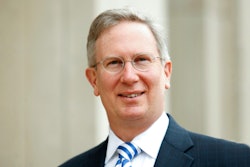Among individuals and organizations that prize inclusiveness and diversity in higher education, Syracuse University chancellor and president Dr. Nancy Cantor is a champion. Earlier this month, the American Council on Education (ACE) honored her with the 2011 Reginald Wilson Diversity Leadership Award. On her own campus; however, she’s faced criticism that her efforts to make the university more inclusive has somehow compromised its reputation as a leading academic institution.
Last week, the University Senate met and intensely discussed the subject. The senate committee for diversity put forth a motion stating that the senate endorses the university’s pursuit of inclusiveness in its admission practices. It also recommends that the university continue its policy of inclusion and agrees that the goals of academic excellence and diversity are complementary rather than contradictory.
“It was such a heated debate. I’ve never seen anything like this,” says Dr. Micere Githae Mugo, Meredith Professor for Teaching Excellence and a faculty member in the department of African-American Studies, who presented the motion.
The motion passed, but only after extensive evidence was presented in support of it.
On the opposing side are faculty members, students and alumni who have asserted that outreach efforts for inclusiveness has compromised selectivity—particularly pointing to an increase in Syracuse’s admission rate of more than 10 percent in the past two years. Editorials and letters to the editor have appeared in The Daily Orange on both sides of the discussion.
Mugo says the committee for diversity presented evidence that selectivity has not been diminished at all.
“We have a population that has increased in diversity from 16 percent in 2002 to 29 percent in 2010,” Mugo says. “The SAT scores have remained the same, which we understand is a common factor nationally, but the GPA of the students we are admitting has risen from 3.49 to 3.6.
“The graduation rate is higher and the quality of education the students are getting is higher, but the diversity is good. It’s not compromising the standard.”
A sticking point for many who have sounded an alarm about the increased admission rate is U.S. News & World Report listing Syracuse among “A+ Options for B Students.”
“University administrators pull their hair out over U.S. News & World Report. They don’t tell you what all their metrics are, so it’s very hard to figure out,” says Dr. Douglas Biklen, dean of the School of Education.
Biklen says increased admissions are not uncommon when a university implements diversity efforts.
“What I want for the School of Education and what I think Syracuse University wants overall is representativeness nationally and internationally,” he says. “A major research university wants to make sure that it’s recruiting nationally. You have to admit more students the further away you go [from campus]. So when Syracuse University seeks students from, say California, you’re going to have to probably admit more in order to get some because those students are weighing if they should go to Berkeley, USC or Syracuse.
“Geographic diversity, academic excellence and then you have to have representation of the national demographic. That’s part of creating a vibrant community and also part of preparing students for their future work lives.”
These are precisely things Cantor has done since becoming chancellor. Her history in academia includes the 2003 U.S. Supreme Court cases Grutter v. Bollinger and Gratz v. Bollinger. As provost and executive vice president for academic affairs at the University of Michigan during that time, she played a crucial role in preparing the university’s case.
“Her stamp appears not just on Michigan, but also on the entire higher education landscape,” says Dr. Diana I. Cordova, director of ACE’s Center for Advancement of Racial and Ethnic Equality, Division of Programs and Research. “She’s been a key figure nationwide in terms of fostering diversity and the importance of inclusion in college and university campuses.”
At Syracuse, Cantor is, as written on the university’s Web site, “helping forge a new understanding of the role of universities in society as SU pursues its vision, Scholarship in Action (www.syr.edu/about/vision.html). This entails a view of the university not as a traditional ‘ivory tower,’ but as a public good, an anchor institution that collaborates with partners from all sectors of the economy to more effectively serve the needs of society.”
Dr. Lorraine Branham, dean of Syracuse University’s S.I. Newhouse School of Public Communications, says at the University Senate meeting those who spoke about selectivity kept saying they are not opposed to diversity.
“They tried very hard to separate the discussion about diversity and inclusiveness from the debate about selectivity. It was disingenuous and it didn’t work,” Branham says.
“It’s important we embrace diversity,” says Branham. “The chancellor gets beat up a lot about this, but she has done a great deal to change the dynamic.
“I know some people worry about [Syracuse] leading in the area of diversity, but I think blazing a trail could elevate the school in many ways, more than people realize.”
While she declined to comment on Syracuse, Cordova does say that collecting data is essential to fostering informed debate. Mugo says it was the statistics that eventually allowed the motion to pass.
“This is a changing world. You cannot hold history hostage,” Mugo says. “We value debate. The debate should go on. We don’t want it repressed, but as the debate goes on an institution has to respond historically to a situation.”


















